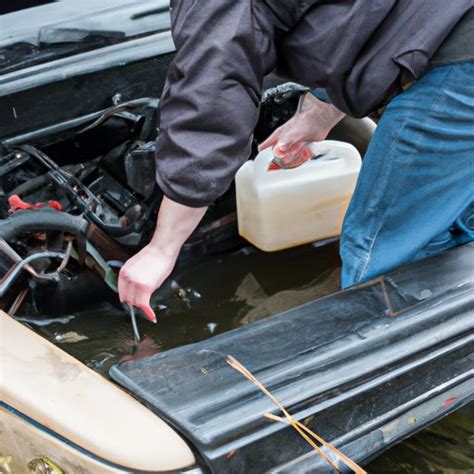Don't Get Stuck: How to Start a Flooded Moped
A flooded moped is a frustrating experience. That sputtering engine, the refusal to even cough to life – it leaves you stranded and soaked (possibly literally!). But don't despair! Understanding the causes of a flooded moped and the steps to revive it can get you back on the road quickly. This guide will walk you through the process, answering common questions and offering practical solutions.
Why Did My Moped Flood in the First Place?
Before we dive into solutions, let's understand the culprit: too much fuel in the engine's combustion chamber. This happens when excessive fuel is injected or leaks into the cylinder without properly igniting. Several factors can contribute to this:
- Over-choking: Using the choke excessively, especially in warm weather or when the engine is already warm, introduces too much fuel into the mixture.
- Faulty Carburetor: A malfunctioning carburetor can deliver an overly rich fuel mixture, leading to flooding. This might be due to a clogged jet, a damaged float, or a problem with the carburetor's diaphragm.
- Incorrect Throttle Setting: Holding the throttle open while attempting to start the engine can also lead to flooding.
- Ignition Problems: A weak spark plug or faulty ignition system can prevent the fuel from igniting properly, contributing to a buildup of unburned fuel.
How Do I Know My Moped is Flooded?
Identifying a flooded moped is usually straightforward. The key symptoms include:
- Cranking without starting: The engine cranks but refuses to fire up.
- Backfiring: You might hear a backfire or popping sound from the exhaust.
- Wet Spark Plug: If you remove the spark plug, it might be wet with fuel.
How to Start a Flooded Moped: A Step-by-Step Guide
Here's a proven method for reviving your flooded moped:
-
Turn the Fuel Off: The first and most crucial step is to turn off the fuel supply to prevent further fuel from entering the carburetor.
-
Remove the Spark Plug: Locate the spark plug and carefully remove it using the appropriate spark plug wrench. Clean the spark plug with a wire brush to remove any dirt or carbon deposits. Inspect the spark plug for any visible damage.
-
Dry the Spark Plug: Use a clean rag or paper towel to wipe the spark plug dry. Ensure there's no visible fuel on the plug itself.
-
Air Out the Cylinder: With the spark plug removed, crank the engine several times to clear out excess fuel from the combustion chamber. This is essential to prevent further flooding.
-
Reinstall the Spark Plug: Carefully reinstall the spark plug, ensuring it's tightened properly.
-
Check the Air Filter: A clogged air filter can also contribute to a rich fuel mixture. Ensure it is clean.
-
Attempt to Start: Now, try starting the moped as normal. Avoid using the choke unless absolutely necessary and only for a short duration. If it doesn't start immediately, repeat steps 2-6.
-
Consider Professional Help: If the moped still refuses to start after these steps, it's best to seek professional help from a qualified mechanic. There might be an underlying issue with the carburetor, ignition system, or other components.
What if My Moped is Still Not Starting After Trying These Steps?
If the problem persists, it's time to consider more advanced troubleshooting. These could include:
Is the Battery Dead?
A weak or dead battery can prevent the engine from cranking, even if the fuel system is fine. Check the battery voltage using a multimeter.
Is the Carburetor Faulty?
A malfunctioning carburetor is a common cause of flooding. This often requires professional cleaning or repair.
Is There a Problem with the Ignition System?
Problems with the spark plug, ignition coil, or other ignition components can prevent the fuel from igniting correctly. A mechanic can diagnose and resolve these issues.
How Can I Prevent My Moped from Flooding in the Future?
Prevention is always better than cure. Here's how to avoid future flooding episodes:
- Use the Choke Sparingly: Only use the choke when starting a cold engine and only for a short period. Avoid excessive use, especially in warmer weather.
- Regular Maintenance: Regular maintenance, including carburetor cleaning, is crucial for ensuring proper fuel delivery.
- Learn Your Moped's Quirks: Understanding your moped's specific needs and characteristics can help you avoid making mistakes that lead to flooding.
By following these steps and understanding the potential causes of flooding, you can effectively revive your moped and get back on the road. Remember, if the problem persists, seeking professional help is always the best option.

